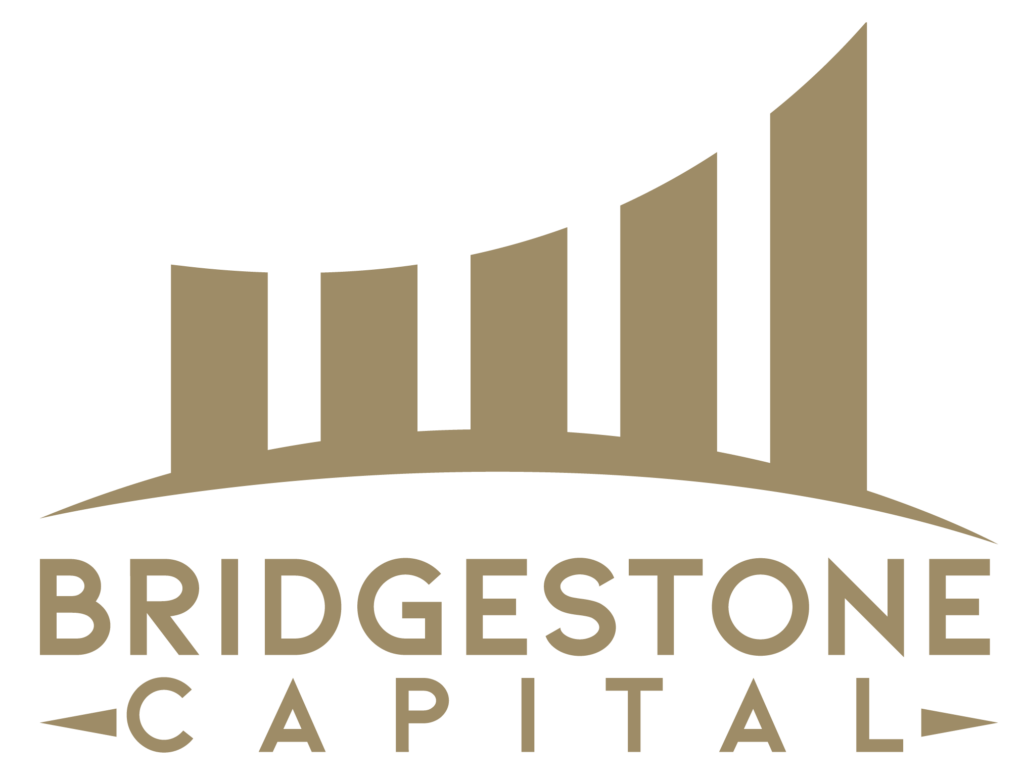Estimated reading time: 8 minutes
When investing, understanding what is the equity multiple in commercial real estate is a vital instrument as it aids investors in ascertaining the probable return on investment (ROI). This financial metric provides investors with the necessary insight to evaluate the profitability of a real estate endeavor based on its anticipated returns.
This is yet another term in the seemingly, never-ending glossary of terms in CRE…oops, there’s another one.
Related Article: Structuring Debt and Raising Equity
Understanding the Equity Multiple in Commercial Real Estate Investment
The equity multiple is derived using the following straightforward formula:
Equity Multiple = (Total Profit + Equity Invested) / Equity Invested
This calculation assists in approximating the revenue that a real estate investment could generate over a defined time frame. It helps individual investors make choices among various projects by pinpointing the ones that could yield the highest profits.
Not only does the equity multiple (EM) facilitate the forecast of potential earnings, but it can also be juxtaposed with other financial metrics, such as the internal rate of return (IRR).
While the equity multiple solely accounts for the total returns garnered from an investment, the IRR additionally considers the time value of money, thus offering a comprehensive understanding of a project’s financial performance.
In this article, we’ll delve into why the equity multiple is a valuable asset for real estate investors, aiding them in making more informed financial decisions amidst a competitive market.
Related Article: What is a Real Estate Equity Waterfall?
[divi_switch_layout id=”1311″]
Metrics to Understand
Comparing Metrics in Real Estate Investment While the equity multiple is a valuable measure for evaluating the return on invested capital, reviewing it in conjunction with other metrics for a well-rounded grasp of a real estate investment’s performance.
Here are some other pivotal metrics:
#1. Capitalization Rate (Cap Rate) This rate is the proportion of the property’s net operating income (NOI) to its purchase price. Investors utilize this metric to project a property’s potential return on investment.
#2. Cash-on-Cash Return This metric represents the annual before-tax cash flow ratio to the total amount of cash invested. It assists investors in understanding their yearly cash return on a property.
#3. Internal Rate of Return (IRR) This is the anticipated annualized rate of return on the invested capital, factoring in the time value of money.
Related article: What is a Preferred Return?
Equity Multiple-Decoded
Commercial real estate investors must scrutinize and juxtapose various investment opportunities using the equity multiple and the metrics above. By doing this, they can make well-informed decisions and cherry-pick the most enticing properties in line with their specific risk tolerance and investment objectives.
Decoding Equity Multiple Results The equity multiple is a critical metric employed to contrast investment opportunities as it equips investors to gauge possible investment returns. Elevated equity multiple suggests an investment has produced a higher return on the investor’s equity. In contrast, a diminished equity multiple implies a lesser return on investment.
It’s worth noting that higher equity multiples, while often correlated with higher potential returns, may also indicate increased levels of risk. Companies with soaring equity multiples depend more heavily on debt financing and maintain a more leveraged capital structure. Conversely, companies with reduced equity multiples are generally associated with lower risks as they possess a lower debt-to-equity ratio, making them less reliant on debt financing.
In real estate investments, heightened equity multiples stem from a robust annual cash flow, superior IRR, or an escalated property value. Conversely, lower equity multiples suggest a less attractive investment characterized by weaker cash flow, lower IRR, or decreased property value.
Related Article: 11 Best Books for Investing in Commercial Real Estate
Organizing and Streamlining Investment opportunities
Strategizing Investment Opportunities Assessment For investors to appraise a variety of investment opportunities efficaciously, they should consider the following factors:
| Criteria | Description |
| Past Performance | Examine Past Trends to gather insights into possible returns. Keep in mind that past performance doesn’t guarantee future results. |
| Industry Standards | Contrast equity multiples with industry norms to determine the position of a specific investment relative to its counterparts. |
| Interest Rates | Contemplate how swings in interest rates could affect your investment returns, particularly in real estate. |
| Investment Preferences | Factor in your risk tolerance, investment timeline, and anticipated returns. Investors averse to risk might lean towards lower equity multiples, while those more open to risk could favor higher ones. |

When investors understand and interpret multiple equity results, they equip themselves better to identify and capitalize on potential investments that align with their strategic goals and objectives.
Time Value of Money
Grasping the Time Value of Money The Concept of Time Value of Money Understanding the Time Value of Money (TVM) concept is critical when analyzing investments, especially when interpreting equity multiples (EM) in real estate. TVM signifies that a specific amount of money today holds more significant value than the identical sum in the future due to its potential earnings in the interim.
This concept has a profound influence on the computation of the equity multiple and other investment metrics, including:
- Internal Rate of Return (IRR)
- Cash-on-Cash Return
- Net Present Value (NPV)
To accommodate TVM, an investor must contemplate the discount rate. This rate symbolizes the cost of investing funds and reflects the expected percentage rate of return. When determining the EM, it’s vital to consider the present value of all net cash flows and the proceeds from the final sale. Thus, the TVM concept ensures that the equity multiple formula considers the total profit and the time it takes to earn it.
IRR vs. Equity Multiple
The Comparison Between IRR and Equity Multiple IRR and equity multiple are invaluable metrics for assessing real estate investments. While the equity multiple indicates the overall investment return multiple, illustrating how many times the investment is anticipated to grow over the hold period, the IRR computes the percentage rate of return on the investment.
| Metric | Definition | Use |
| Equity Multiple | Total Profit/ Equity Invested | Measures the multiple of the initial Returned at the end of the holding period |
| Internal Rate of Return (IRR) | The percentage rate at which all cash flows’ net present value (NPV) becomes zero. | Considers the time value of money for net cash flows. |
While both IRR and equity offer valuable perspectives, each has advantages and disadvantages.

A notable limitation of the equity multiple is its disregard for the time value of money, in contrast to IRR, which offers a more detailed view of long-term investments and facilitates better comparison between investments with different hold periods.
However, EM can prove beneficial when other metrics like IRR or cash-on-cash return might fail to deliver a lucid picture of the investment due to fluctuating cash flow patterns or hold periods.
Accredited vs. Non-Accredited investors
Understanding Investor Profiles and Equity Multiple Profiles: Accredited versus Non-Accredited Investors Both accredited and non-accredited investors find the equity multiple a vital financial metric. Accredited investors, being individuals or entities, meet particular financial prerequisites that permit them to engage in more high-risk private investments. Typically, these investors possess a substantial net worth, exceed a certain annual income threshold, or have professional expertise in finance.
In contrast, non-accredited investors must meet these financial qualifications and consequently have restricted access to specific private investments. They usually rely on financial advisors for guidance and engage in public investment options covering more regulated real estate deals.
Cash Flow Projection
The Importance of Estimating and Analyzing Yearly Cash Flow Projecting annual cash flow is a significant part of real estate investing. Investors can anticipate cash flows across the holding period—the designated duration for maintaining the investment. One popular approach involves examining the net operating income (NOI), calculated as the property’s yearly gross income subtracted by expenses. Using the cap rate, one can determine the property’s value by dividing the NOI by the property’s market value.
Several factors should be taken into consideration by investors while projecting cash flows for their investments, including:
- Equity amount: The down payment and any supplemental equity contributed will impact the projected cash flow. A more substantial down payment reduces debt, decreasing interest expenses and boosting cash flow.
- Operating expenses: Consideration should be given to maintenance, repairs, property management fees, insurance, and other property-related expenses when estimating yearly cash flows.
- Rent growth: Anticipations of rent increments or declines across the holding period will affect future cash flows.
- Vacancy rates: The proportion of vacant units will also affect cash flow predictions.
Related Article: What is Multifamily Syndication and How can I participate?
Frequently Asked Questions
Equity Multiple Formula: Commonly Asked Questions How is the equity multiple calculated? You can compute the equity multiple using the following formula:
Equity Multiple = (Total Cash Distributions + Equity Invested) / Equity Invested
What distinguishes equity multiple from cash-on-cash return? Both equity multiple and cash-on-cash returns are financial metrics employed to assess real estate investments. While the equity multiple quantifies the total return on investment, the cash-on-cash return measures the income earned on the cash invested. Both metrics are essential for investors: the equity multiple offers insights into the potential total return, whereas cash-on-cash return emphasizes annual cash returns.
What constitutes good equity multiple in real estate? A “good” equity multiple in real estate can fluctuate based on the specific investment, prevailing market conditions, and the investor’s goals. Generally, an equity multiple of 2 or above is regarded as robust since it suggests that an investor can double their initial investment.
In Conclusion, With your newfound clear comprehension of the equity multiple formula, you’re prepared to predict your return from investment properties and gauge it against your invested capital. In conjunction with other investment formulas, this knowledge enables you to scrutinize real estate deals thoroughly and invest solely in those yield maximum returns.
Are you interested in accessing the properties I personally invest in? Join our Supply Chain investor club today. Click HERE to Learn More!
Always consult with a financial advisor, CPA, or CFP to make sure your financial plans align with your goals, risk tolerance and financial situation.
–
